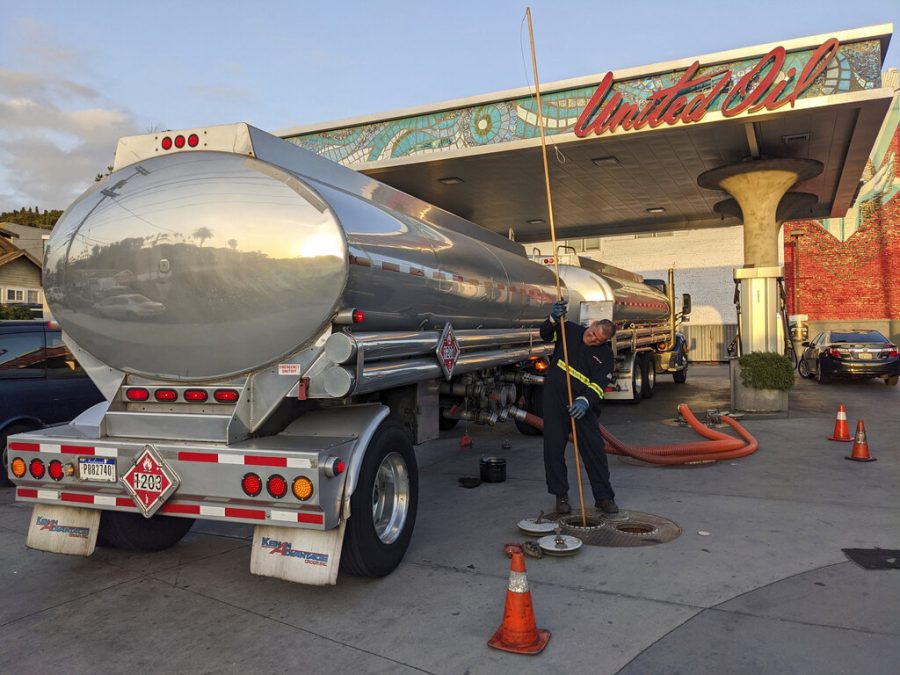OPEC to increase oil output as global economy recovers
Oil-producing countries made drastic cuts to support prices and must now judge how much additional oil the market needs.
DAMIA DOVARGANES/Associated Press
A fuel truck driver checks the gasoline tank level at a United Oil gas station in Sunset Blvd., in Los Angeles on May 20.
June 1, 2021
FRANKFURT, Germany — The OPEC oil cartel and allied producing countries have confirmed plans to restore 2.1 million barrels per day of crude production.
Energy ministers made the decision during an online meeting Tuesday, balancing fears that continuing COVID-19 outbreaks in some countries will reduce demand against the rising need for energy in recovering economies.
During the worst of the pandemic, oil-producing countries made drastic cuts to support prices and must now judge how much additional oil the market needs as producers slowly add more production.
Saudi Energy Minister Prince Abdulaziz bin Salman said recent market developments proved the decision to gradually increase production, originally made in April and reconfirmed Tuesday, was “the right decision.” He said there were still “clouds on the horizon” regarding the recovery and demand for energy.
The cartel decided to stick with its previous decision to raise production by 2.1 million barrels per day from May to July. The group planned to add back 350,000 barrels per day in June and 440,000 barrels per day in July. At the same time, Saudi Arabia is gradually adding back 1 million barrels in voluntary cuts it made above and beyond its group commitment.
The combined OPEC Plus format of members led by Saudi Arabia and nonmembers, chief among them Russia, faces concerns that renewed COVID-19 outbreaks in countries such as India, a major oil consumer, will hurt global demand and weigh on prices.
The economic recovery in the U.S., Europe and Asia is expected to increase energy demand in the second half of the year as people travel more and use more fuel. The U.S. driving season began over Memorial Day weekend and more Americans have been vaccinated, leaving people feeling freer to travel and take longer car trips.
On Tuesday, the price of benchmark U.S. crude rose 3.6% to $68.66. Brent crude, the European standard, traded 2.7% higher at $71.17.
An additional factor complicating market estimates is Iranian oil’s possible return to the market, depending on the outcome of talks over Iran’s nuclear program. Paul Sheldon, chief geopolitical risk analyst at S&P Global Platts, said he expects a framework nuclear deal will be reached before Iran’s June 18 election, allowing Iranian supply to rise by 1.05 million barrels per day between May levels and December.
Bin Salman said the prospect of more Iranian oil coming to market was not discussed at the brief meeting.
Oil prices have risen more than 30% since the start of the year. That has meant higher costs for motorists in the U.S., where crude makes up about half the price of a gallon of gasoline. Holiday travelers paid the highest gas prices since 2014 at a national average of $3.03 per gallon, $1.12 more than last year.



